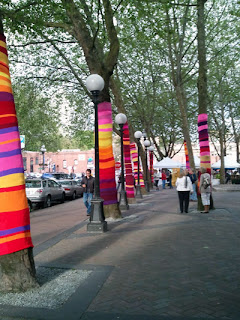
Architectural subjects perhaps give the greatest sources of inspiration for the theme 'Grids', whether it be single buildings, as with David Hepher's photo realistic image above, or the cityscape as a whole, such as Vieira da Silva's intricate patterned interpretation below.

Tommy Cinquegrano's images at first glance look like one building, but on closer inspection you can see they are made up of multiple images taken from different sources, as in the image below. He relies on the common grid-like structures of the buildings to allow him to combine his photos so successfully.

Seeing the geometric patterns within a scene is the source of inspiration for a diverse range of artists. William Gilles' almost naive view of a fishing harbour (below) evokes childhood memories.

Whilst Lyonel Feininger's work (below) takes on a Cubist sensibility in both tone and colour.

The connection with George Braque's still life pieces is obvious, an example of which is below. Braque, along with Picasso, pioneered the Cubist movement.


David Hockney has long been fascinated with Cubism and much of his work reflects the theme of grids, whether it be his 'joiner' photographic work (as above), or his more recent depictions of the Yorkshire landscape and the patchwork patterns of the hedgerows and fields (below).

Jerry Gretzinger takes this idea further by using maps and aerial views as his main inspiration.

Another interesting interpretation of the photographic joiner, are French design practice PNTS's kaleidoscopic works (below), where the pattern element becomes the dominant factor.

 Depictions of family life are as varied as families themselves. Paula Rego's painting 'The Family' (above) has a distinctly threatening atmosphere! Stanley Spencer's memories of domestic bliss are also less than rosy, but the image of the whole family helping to bath the baby has a certain charm.
Depictions of family life are as varied as families themselves. Paula Rego's painting 'The Family' (above) has a distinctly threatening atmosphere! Stanley Spencer's memories of domestic bliss are also less than rosy, but the image of the whole family helping to bath the baby has a certain charm. Helen Oxenbury's illustrations for 'We're going on a Bear Hunt' (below) are perhaps nearer to the image of the ideal childhood.
Helen Oxenbury's illustrations for 'We're going on a Bear Hunt' (below) are perhaps nearer to the image of the ideal childhood. Joan Eardley painted the same family of children that lived next door to her in a Glasgow tenement. She showed them playing out in the street everyday, having been sent out from under their mother's feet. The older children looking out for the younger ones.
Joan Eardley painted the same family of children that lived next door to her in a Glasgow tenement. She showed them playing out in the street everyday, having been sent out from under their mother's feet. The older children looking out for the younger ones. Natasha Kerr's textile pieces often feature old family photos and scraps of fabric that have significant memories for her.
Natasha Kerr's textile pieces often feature old family photos and scraps of fabric that have significant memories for her.





































